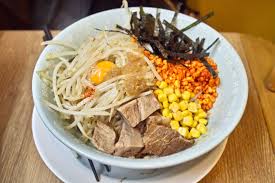BACKGROUND OF THE “MAYO CLINIC” DIET
The ‘Mayo Clinic’ Diet is a weight-loss plan that uses foods low in carbohydrates, and high in fats, to help you lose weight. Though the diet’s name implies affiliation, the Mayo Clinic in no way endorses this diet; in fact, they created a new diet plan to combat this one. While it’s difficult to confirm, there’s evidence that this weight-loss program emerged in the 1930s as the Hollywood Diet.
The list of foods allowed on this diet makes the average grocery list look like The Stand. In addition to strictly limiting your diet, this program also provides weekly meal plans. The plan is intended for short-term, periodic use. If adopted over the long-term, serious side effects might result. Without an official website to reference, however, it’s difficult to determine what those side effects might be.
“MAYO CLINIC” DIET INGREDIENTS AND SIDE EFFECTS
The only good thing about this diet is its focus on wholesome, natural foods. An online PDF lists allowed foods and corresponding servings, as follows:
- For two weeks, you cannot stray from the menu outlined below. No snacks. No cheating.
- While this diet advises against alcohol intake, it allows whiskey on meat days.
- Breakfast: You can eat one grapefruit, black coffee or clear tea, and one to two eggs.
- Monday: You can eat two eggs and one grapefruit for lunch. Dinner allows a piece of dry toast, two eggs, a grapefruit, coffee, and a combination salad.
- Tuesday: Lunch consists of two eggs, coffee, and tomatoes. Dinner is comprised of cucumber, lettuce, steak, olives, two eggs, and a cup of coffee.
- Wednesday: Spinach, coffee, and two eggs make up a Wednesday lunch. Dinner, on the other hand, allows two lamb chops, a cup of tea, celery, cucumbers, and tomatoes.
- Thursday: Thursday’s lunch is identical to what you ate on Wednesday. Dinner lets you have two eggs, a slice of dry toast, cabbage, and some cottage cheese.
- Friday: Your lunch still consists of two eggs, spinach, and coffee. Dinner is dry toast, grapefruit, fish, and a combination salad.
- Saturday: Your lunch consists of a limitless amount of fruit salad. Dinner, meanwhile, consists of coffee, cucumber, celery, tomatoes, and steak.
- Sunday: Cabbage, coffee, grapefruit, and chicken make up your lunchtime menu. For dinner, you’re allowed grapefruit, tomatoes, and cold chicken.
The diet’s handbook comes with a warning:“DO NOT STAY ON THIS DIET FOR MORE THAN TWO WEEKS.” This cautionary statement likely exists to limit side effects. According to Livestrong.com, short-term use of this diet can cause fatigue, stomach problems, difficulty concentrating, constipation, and fatigue. These symptoms are common for those with fiber deficiencies. Long-term use of the ‘Mayo Clinic’ diet might result in “diabetes, cancer, heart disease and high blood pressure.”
While the book mentions an average weight loss of 10 pounds a week, it does not provide any scientific or clinical evidence to support these claims.
“MAYO CLINIC” DIET QUALITY OF INGREDIENTS
This diet allows very few foods. Furthermore, what it does allow quickly becomes repetitive. While the ‘Mayo Clinic’ diet emphasizes whole foods, it fails to provide enough variety to meet the average person’s nutritional requirements. Eating this diet leads to deficiencies in both fat and fiber. A lack of these items, in some cases, can result in long-term damage to the body.
Due to a lack of proper nutrients, we believe the ‘Mayo Clinic’ diet to be a very poor weight-loss programs. The side effects involved are too numerous for us to safely recommend this plan.
THE PRICE OF THE “MAYO CLINIC” DIET
This program requires no questionable pills or supplements. Therefore, the price of the ‘Mayo Clinic’ diet is equal to whatever you rack up at the grocery store.
Business of “Mayo Clinic” Diet
Little information exists about the history and creation of this diet. As mentioned earlier, this diet is in no way connected to the Prestigious Mayo Clinic. Web MD states, “The fad diet has been making the rounds for years.” They continue by calling this diet a: “Bogus version of the diet which was not developed by – and has no connection to – the prestigious Mayo Clinic in Minnesota.”
Attempting to piggyback off a reputable organization’s does prove one thing about this diet: its dishonesty.
Customer Opinions of “Mayo Clinic” Diet
We could find very few people who fell for this diet’s lies. What few forums we found discussing it were concerned about this plan’s safety and credibility. The few people who tried this plan were less than impressed:
“Wish I could say I wasn’t hungry.”
“Is a waste of time and foolishness.”
“Contains no mysterious fat burning properties.”
Common complaints centered around hunger, cravings, and a lack of normal functions. Even just two weeks of use led to debilitating, uncomfortable side effects. Though we looked for one, DIETSiTRIED could not find a positive review.
ADVANTAGES OF THE “MAYO CLINIC” DIET
- Emphasizes whole foods and healthy ingredients.
- Ingredients are cheap and easy-to-find.
- Claims people can lose up to 10 pounds a week. If this were true, it’d indicate a diet that’s very unhealthy. Realistic weight-loss programs aim 2 to 3 pounds of weight loss per week. And, the Center for Disease Control and Prevention says, ““Evidence shows that people who lose weight gradually and steadily (about 1 to 2 pounds per week) are more successful at keeping weight off.”
- Only requires two weeks of adherence.
DISADVANTAGES OF THE “MAYO CLINIC” DIET
- Leads to nutritional deficiencies and side effects.
- Tries to capitalize on a great organization’s reputation.
- Makes a lot of dishonest weight-loss claims.
- Any weight lost is water weight and quickly returns once the diet ends.
DOES THE “MAYO CLINIC” DIET WORK??
The “Mayo Clinic” Diet achieves limited weight loss success. This has much more to do with the limited menu than any true science. The main problem with this diet, however, is its falsified namesake. This weight-loss plan is in no way endorsed by or affiliated with the Mayo Clinic. It just capitalizes on its name to try to trick consumers into giving it a shot.
Furthermore, even short term use of this diet can result in side effects. Numerous reputable organizations, including the real Mayo Clinic, have concluded that this fad diet is unsafe. We strongly advise against its use.





















